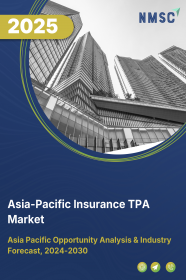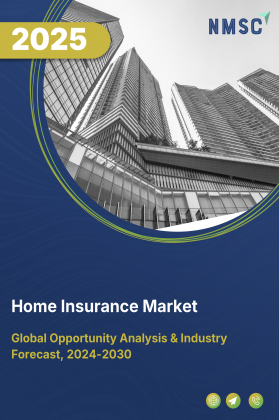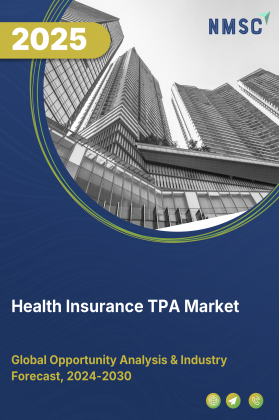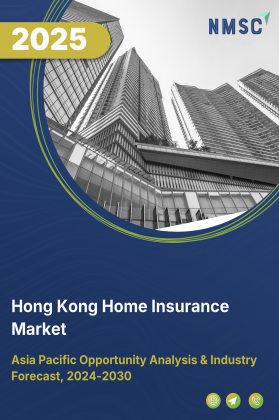
Asia-Pacific Insurance TPA Market by Type, (Health Insurance, Property and Casualty Insurance, Workers Compensation Insurance, Disability Insurance, Personal Accident Insurance, Travel Insurance, Cyber insurance, and Others), by Service, Claims Management, Risk Control Management), by End User (Healthcare, Construction, Real Estate and Hospitality, Transportation, Staffing, Banking, Travel and Tourism, Telecommunication, Other End User) – Opportunity Analysis and Industry Forecast, 2024 – 2030.
Industry: BFSI | Publish Date: 24-Sep-2025 | No of Pages: 226 | No. of Tables: 156 | No. of Figures: 101 | Format: PDF | Report Code : BF2725
Asia-Pacific Insurance TPA Market Overview
Asia-Pacific Insurance TPA Market size was valued at USD 87.51 billion in 2023, and is predicted to reach USD 172.43 billion by 2030, at a CAGR of 9.1% from 2024 to 2030.The insurance third-party administrator (TPA) market focuses on the provision of administrative services for insurance companies, including claims processing, customer support, and policy management.
TPAs act as intermediaries between insurers and policyholders, handling a range of tasks such as processing claims, managing customer inquiries, and ensuring compliance with regulatory requirements. The primary advantage of the insurance TPA is to streamline insurance operations, reduce operational costs, and enhance service efficiency for insurance companies.
By outsourcing administrative functions to specialized TPAs, insurers focus on their core business activities while benefiting from the expertise and technology that TPAs offer. As the insurance industry continues to evolve, driven by increasing customer expectations and regulatory changes, the insurance TPA market plays a crucial role in optimizing operational performance and improving overall customer experience.
Digital Transformation Accelerates Efficiency, Fraud Detection, and Customer Engagement
The Asia-Pacific insurance TPA market is undergoing rapid modernization through the adoption of advanced digital technologies such as artificial intelligence (AI), machine learning (ML), robotic process automation (RPA), and blockchain. These technologies are not only reducing turnaround times for claims adjudication but also enhancing transparency, minimizing human errors, and improving fraud detection capabilities. For instance, AI-driven analytics help in identifying fraudulent claims early, while RPA streamlines repetitive administrative tasks, allowing TPAs to focus on high-value functions. Blockchain is being increasingly integrated into claims management systems to enable secure, tamper-proof records and faster settlement processes. At the same time, digital customer engagement tools, such as mobile claims apps and self-service portals, are empowering policyholders with greater control and faster communication. Collectively, these advancements are transforming TPAs into strategic partners for insurers, allowing them to handle larger volumes of claims more efficiently while improving customer satisfaction.
Rising Middle-Class Incomes and Expansion of Corporate and Health Insurance Fuels TPA Demand
The Asia-Pacific region is experiencing a surge in middle-class populations with higher disposable incomes, particularly in fast-growing economies such as India, Indonesia, Vietnam, and the Philippines. This demographic shift is significantly increasing the penetration of insurance products, including motor, health, property, and investment-linked policies. Alongside individual policy growth, the corporate insurance segment is expanding rapidly, with companies offering comprehensive employee health plans, life insurance benefits, and group coverage to attract and retain talent. This surge in both individual and corporate insurance policies creates a complex environment for insurers, who are increasingly relying on TPAs to manage claims, ensure compliance with diverse regulations, and provide seamless administrative support. TPAs play a critical role in bridging the gap between insurers, healthcare providers, and policyholders by offering scalable solutions for claims management, cross-border policy servicing, and regulatory reporting. This trend is cementing TPAs as indispensable partners in the insurance value chain across Asia-Pacific.
Surging Cybersecurity Risks and Data Privacy Pressures Strain TPA Capabilities
As TPAs across the Asia-Pacific region increasingly digitize their operations—leveraging cloud platforms, AI-based claims processing, and customer portals—they have become prime targets for cyberattacks. In recent years, the region has witnessed a significant rise in cyber incidents, putting immense pressure on TPAs to safeguard sensitive policyholder and medical data. Regulators in several Asia-Pacific markets are responding by tightening data protection laws and enforcing stricter cybersecurity compliance requirements, which further increases the complexity of operations.
For TPAs, especially mid-sized and smaller players, meeting these heightened requirements demands substantial investment in advanced security frameworks, including encryption, multi-factor authentication, and 24/7 monitoring systems. Beyond financial costs, the reputational risks associated with data breaches can severely undermine client trust and market credibility. As a result, cybersecurity threats and data privacy obligations have emerged as a major restraint, limiting the ability of TPAs to scale operations while maintaining regulatory compliance and consumer confidence
Embedded Insurance Ecosystems via Digital Platforms Unlock Vast TPA Potential
The growing adoption of embedded insurance in Asia-Pacific, where insurance products are seamlessly integrated into everyday digital platforms such as e-commerce, ride-hailing, fintech, and travel apps, is creating a major growth avenue for TPAs. This model simplifies customer access to insurance by offering coverage at the point of need, eliminating paperwork, and enabling faster onboarding and claims settlement. With embedded insurance expected to expand rapidly across the region in the coming years, TPAs are well-positioned to support insurers by managing high-volume, low-complexity policies and ensuring efficient, digital-first claims handling. Furthermore, as insurers partner with non-insurance digital ecosystems to expand their reach, TPAs can act as critical enablers by providing automated claims workflows, real-time customer support, and regulatory compliance solutions. This trend not only allows TPAs to scale their operations but also strengthens their role as strategic partners in delivering innovative, accessible, and technology-driven insurance solutions to underserved populations across Asia-Pacific.
China Holds the Dominant Market Share in Asia-Pacific Region
The insurance market in China is growing, owing to the growth in the aging population. This contributes to increasing health insurance policies as old aged people are more prone to diseases, and health insurance cover medical expenses and treatment of critical illnesses.
In addition, the population of China is aware of health risks after COVID-19, and rising healthcare costs provide ample growth opportunities for insurance companies in China. This, in turn, is expected to boost the insurance TPA market that offers claims processing and settlements efficiently.
Additionally, an increase in the sales of electric and hybrid vehicles, owing to various government initiatives to promote increased purchases of electric vehicles (EVs), is further expected to boost the motor insurance segment. For instance, in September 2022, the Government of China announced to extend the exemption of tax levied on electric vehicle purchases to the end of 2023. The tax exemption aimed to bolster the use of battery-powered cars on mainland Chinese roads.
This contributes to the increasing number of insurance policies, owing to the rise in the purchase of EVs. This is further expected to boost the insurance TPA market in China.
Singapore to Witness Substantial Growth in the Asia-Pacific Insurance TPA Market
The insurance industry in Singapore is growing, owing to various ongoing infrastructural projects, such as Resorts World Sentosa Expansion, Shaw Office Tower Redevelopment, and West Hill, Bukit Batok in Singapore. The construction of infrastructures requires different types of insurance policies, such as property insurance, workers’ compensation insurance, and commercial auto insurance, to protect various types of risk.
This contributes to the growing number of insurance policies that allow individuals to enable the development of construction projects in Singapore. Thus, the rise in the number of insurance policies drives the Asia-Pacific insurance TPA market demand, facilitating quick settlement of claims in this country.
Additionally, the growth in government initiatives to boost the purchase of electric vehicles leads to a rise in the number of motor insurance in the country. For instance, in April 2022, the Government of Singapore aimed to develop a greener future and encouraged an electrified vehicle population that contributes to achieving their vision for 100% cleaner energy vehicles by 2040.
The government also launched a new campaign with the ‘Power Every Move’ tagline to raise awareness of electric vehicles. This leads to rise in the adoption of electric vehicles among the population and a notable increase in the overall number of motor insurance policies in the country. This, in turn, is further expected to accelerate the insurance TPA market in Singapore.
Competitive Landscape
The promising key players operating in the Asia-Pacific insurance TPA industry includes Sedgwick, Inc., Crawford & Company, Charles Taylor PLC, Gallagher Bassett International, McLarens Global, Pacific Cross, Medi Assist Insurance TPA Pvt. Ltd., Alankit Insurance TPA Ltd., Vidal Health TPA Pvt. Ltd., Ericson Insurance TPA Pvt. Ltd., Paramount Health Services & Insurance TPA Pvt. Ltd., Family Health Plan Insurance TPA Ltd. (FHPL), Raksha Health Insurance TPA Pvt. Ltd., iXchange Pte Ltd (Singapore), BLK Assistance Co. Ltd., and others.
Asia-Pacific Insurance TPA Market Key Segments
By Type
-
Health Insurance
-
Disease Insurance
-
Medical Insurance
-
Senior Citizens
-
Adults
-
Minors
-
-
-
Property and Casualty Insurance
-
Homeowners Insurance
-
Car Insurance
-
-
Workers' Compensation Insurance
-
Disability Insurance
-
Personal Accident Insurance
-
Death and Permanent Disability
-
Medical Expenses
-
-
Travel Insurance
-
Medical Coverage
-
Trip Cancellation Coverage
-
Baggage and Personal Belongings Coverage
-
Accidental Death and Dismemberment (AD&D) Coverage
-
-
Cyber insurance
-
Gadgets and Personal Belongings Insurance
-
Mobile Phone
-
Laptop
-
-
Others
By Services
-
Claims Management
-
Risk Control Management
By End-User
-
Healthcare
-
Construction
-
Real Estate and Hospitality
-
Transportation
-
Staffing
-
Banking
-
Travel and Tourism
-
Telecommunication
-
Other End User
By Countries
-
Australia
-
China
-
India
-
Indonesia
-
Japan
-
Singapore
-
South Korea
-
Taiwan
-
Thailand
-
Rest of Asia-Pacific
Key Players
-
Sedgwick, Inc.
-
Crawford & Company
-
Charles Taylor PLC
-
Gallagher Bassett International
-
McLarens Global
-
Pacific Cross
-
Medi Assist Insurance TPA Pvt. Ltd.
-
Alankit Insurance TPA Ltd.
-
Vidal Health TPA Pvt. Ltd.
-
Ericson Insurance TPA Pvt. Ltd.
-
Paramount Health Services & Insurance TPA Pvt. Ltd.
-
Family Health Plan Insurance TPA Ltd. (FHPL)
-
Raksha Health Insurance TPA Pvt. Ltd.
-
iXchange Pte Ltd (Singapore)
-
BLK Assistance Co. Ltd.
REPORT SCOPE AND SEGMENTATION:
|
Parameters |
Details |
|
Market Size Value in 2023 |
USD 87.51 Billion |
|
Revenue Forecast in 2030 |
USD 172.43 Billion |
|
Value Growth Rate |
CAGR of 9.1% from 2024 to 2030 |
|
Analysis Period |
2023–2030 |
|
Base Year Considered |
2023 |
|
Forecast Period |
2024–2030 |
|
Market Size Estimation |
Billion (USD) |
|
Growth Factors |
|
|
Companies Profiled |
15 |
|
Countries Covered |
9 |
|
Customization Scope |
Free customization (equivalent up to 80 working hours of analysts) after purchase. Addition or alteration to country, regional, and segment scope. |
|
Pricing and Purchase Options |
Avail customized purchase options to meet your exact research needs. |

















 Speak to Our Analyst
Speak to Our Analyst

























